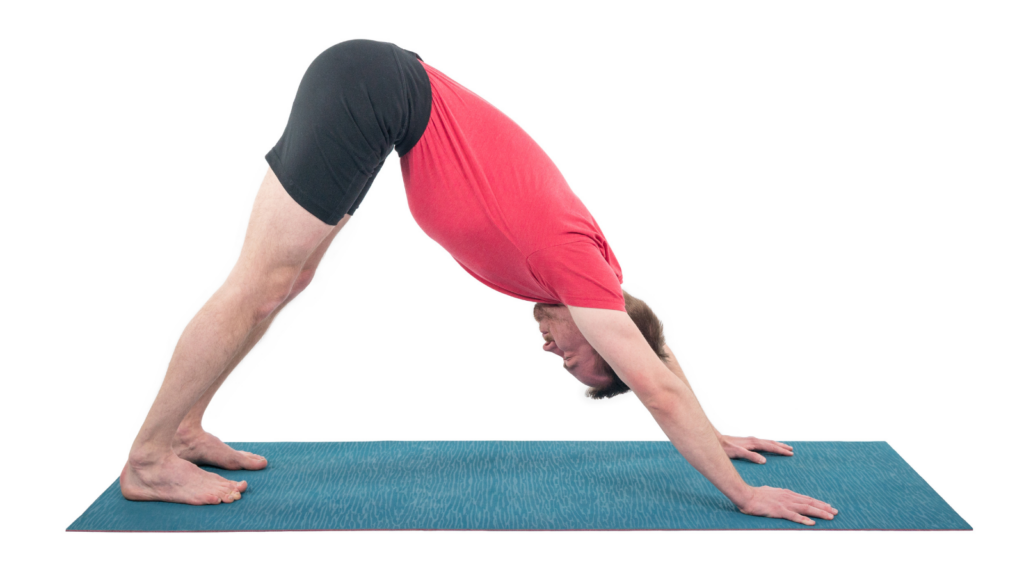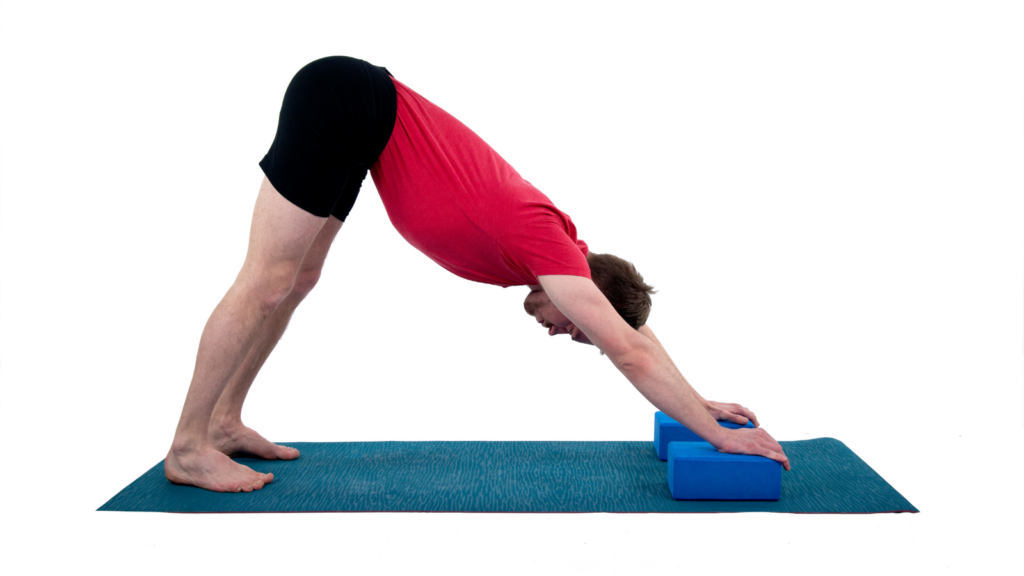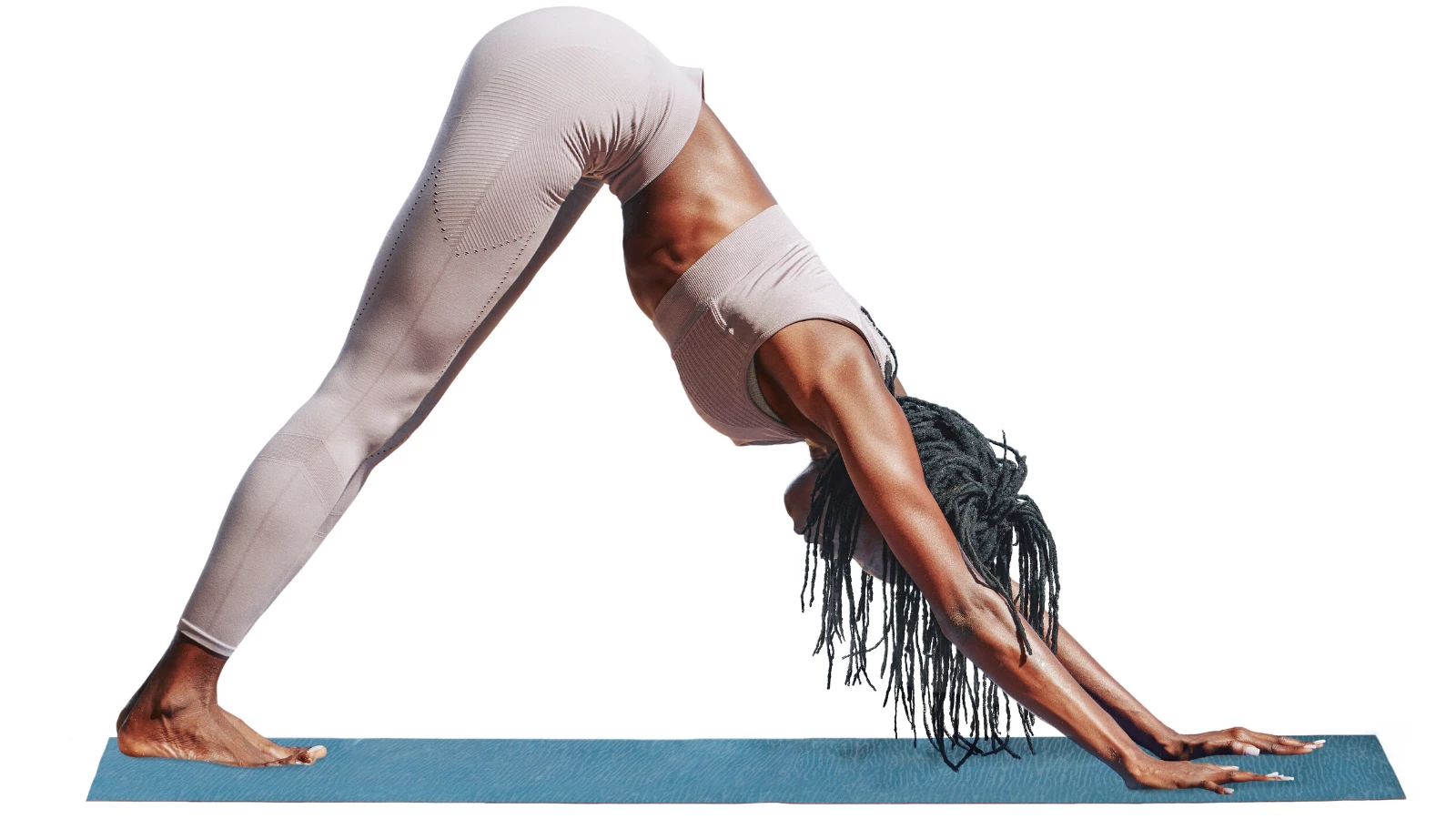Introduction to Downward Facing Dog Pose
Downward Dog is usually considered a beginning yoga pose, but it’s the complexity in execution and the physical demand that makes the pose more of an intermediate asana. Follow along below to learn how to get started with this ubiquitous yoga posture.

Downward Facing Dog Pose (Sanskrit name: Adho Mukha Svanasana) is one of the most commonly taught and practiced yoga poses.
In Vinyasa (flow) classes, Downward Facing Dog is often used as a transition yoga pose to move smoothly and gracefully from one posture to another. Downward Facing Dog is also a powerful asana unto itself that is sometimes held for several breath cycles.
Despite its ubiquitousness, many yoga practitioners find this to be quite a challenging pose. To be properly aligned, Downward Dog Pose requires a good deal of upper body strength and flexibility through the shoulders.
Nonetheless, the benefits from practicing this versatile yoga posture justify the effort it takes. It is a strengthening pose for the upper body and a lengthening pose for the spine and lower body.
A good preparation for Downward Dog is to first practice it at a wall where you can work on yoga alignment and gaining upper body strength.
Holding Downward Facing Dog Pose for several breaths will provide stretch and strength, lengthening the muscles of the back body from the sole of the foot all the way to the shoulders. This yoga pose is also a preparation for Adho Mukha Vrksasana (Handstand Pose) and other arm balances, because it wakes up and strengthens the arms, back and hands.
Note: Downward Dog can be difficult to practice if your hamstrings are on the tighter side. If that’s the case, try bending your knees a bit, so you don’t end up rounding your lower back. To safely start opening the backs of your legs, add Supta Padangusthasana (Reclining Hand-to-Big-Toe Pose) with a strap to your yoga practice.
Benefits of Downward Facing Dog Pose

Yoga students looking to build strength and a more open posture will find much to love about this pose. Downward Dog engages virtually all of the major large muscles, including the triceps, deltoids, lats, glutes, hamstrings, quadriceps, calves, and the serratus anterior muscles of the trunk.
Downward Facing Dog can help strengthen and tone the muscles of the shoulder girdle, arms, and abs, while at the same time lengthening the backs of the legs all the way down to the intrinsic muscles of the feet.
When practiced correctly, Downward Facing Dog can help to release tightness in the upper spine and neck. Practiced over time, it can also help lengthen the hamstrings, which can, in turn, help to loosen up a tight lower back.
Downward Facing Dog Pose is also an inversion yoga posture. It becomes even more powerful when combined with breath awareness. Inverting the respiratory muscles puts the diaphragm into a different relationship to gravity. This can have an energizing effect, especially if you draw the abdominal muscles toward the spine on exhalation. Some find that this inverted change of “scenery” and the breathing pattern it creates can lift the mood and invigorate the body.
Holding the yoga pose for several breath cycles can also be an opportunity to clear the mind and practice single-pointed focus.
Basic Downward Facing Dog

Make sure that you’ve warmed up a bit before attempting the yoga pose. Alternately, start off gently with less intense versions and work your way up to the full expression of the asana.
- Come to Bharmanasana (Tabletop Pose) or Phalakasana (Plank Pose). Push into every little centimeter of your fingers and palms, as if trying to push open a heavy door. Spread your fingers wide. Both of these actions will prevent straining your wrists as you bear weight in this posture.
- Rotate your biceps out, and your triceps back. Hug your arm bones toward each other. This will broaden and stabilize your shoulders across your back, keeping them happy and healthy.
- Draw your lower belly toward your spine while exhaling, to protect your spine from hyperextending. This will help prevent wear and tear, back pain, and injury.
- Holding that alignment, lift your knees and raise your hips to Downward Facing Dog. There’s a tendency to lose the biceps forward/triceps back (external rotation) action as we come into Downward Facing Dog. (This is especially for people with flexible upper backs.) Be sure to take care to maintain this rotation.
- Feel your hips rising higher to the sky. This helps more of the yoga posture’s muscular effort to shift into your legs. The lower body has more capability than the upper body to sustain holding the body’s weight against gravity. Use your arms to help extend your weight back into your feet.
- Without changing the way they are activating, lift your forearms as you press your thighs back. Engage your quadriceps to lift your kneecaps to prevent straining any of the knees’ architecture, as well as to further stabilize the yoga pose.
- As you extend through your spine, maintain the neutral relationship between the spinal curves. Avoid sinking into your midsection or creating a “swayback.” If that’s hard to feel, have a knowledgeable yoga practitioner or instructor observe you.
When properly practiced, this yoga pose should be pain-free in your shoulder joints, back body, and the backs of your legs.



